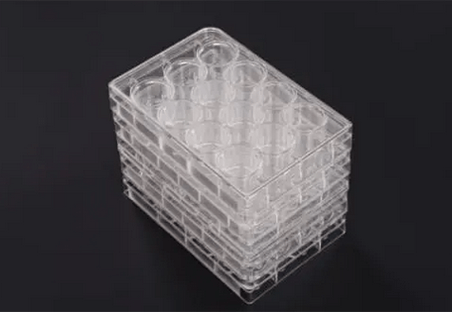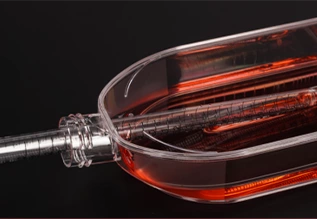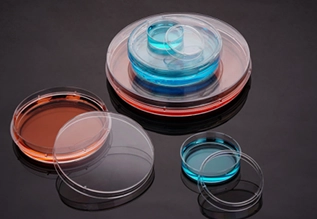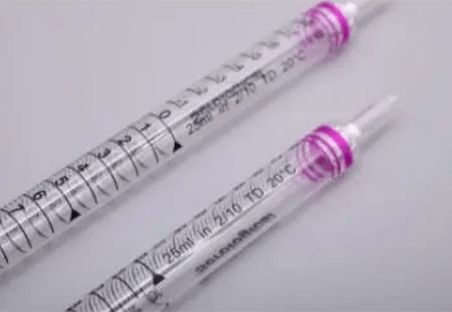Cell culture is a fundamental technique in biological research, allowing scientists to isolate and cultivate specific cell types in a controlled laboratory setting. Cell culture vessels, including flasks, plates, and dishes, are indispensable tools for a wide range of biological research. These containers provide a controlled environment for cultivating cells, enabling scientists to study cellular processes, develop new therapies, and advance our understanding of human health and disease. By understanding the unique characteristics and applications of each vessel type, researchers can optimize their experiments and achieve reliable results.
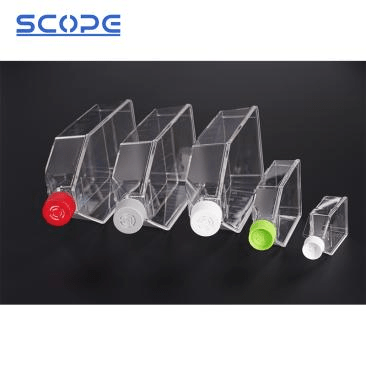
The Importance of Cell Culture Flasks
- Scalability: Cell culture flasks offer unparalleled scalability, allowing researchers to seamlessly transition from small-scale experiments to large-scale production. Whether it’s for generating sufficient cells for downstream applications or establishing cell lines, the flexibility of flask formats accommodates a wide range of experimental needs.
- Uniform Growth: The design of cell culture flasks promotes uniform cell distribution, minimizing the formation of cell clumps and ensuring consistent growth throughout the culture period. This uniformity is crucial for obtaining reliable experimental data.
- Gas Exchange: The vented caps or filters on cell culture flasks facilitate the exchange of oxygen and carbon dioxide, mimicking the physiological conditions essential for cell viability. This gas exchange is critical for maintaining a suitable environment for cell growth and metabolism.
The Importance of Cell Culture Plates
1. High-Throughput Screening
Cell culture plates play a pivotal role in high-throughput screening (HTS) assays. By enabling the simultaneous testing of numerous conditions in a standardized format, researchers can accelerate drug discovery, gene function analysis, and other large-scale experiments. The multi-well design of these plates allows for efficient screening of compound libraries or genetic perturbations, leading to rapid identification of potential hits.
2. Experimental Control
The well-defined compartments of cell culture plates provide precise control over experimental variables. Each well can be treated with different reagents, concentrations, or cell types, allowing for systematic comparison and analysis. This level of control is essential for obtaining reproducible and reliable data, especially in studies involving multiple experimental groups.
3. Compatibility with Analytical Techniques
Cell culture plates are highly compatible with a wide range of analytical techniques. From simple endpoint assays to complex imaging-based analyses, these plates can be used to assess various cellular parameters. Common applications include:
- Immunofluorescence staining: Visualizing specific proteins or cellular structures within individual wells.
- High-content imaging: Acquiring quantitative data on multiple cellular parameters, such as cell morphology, protein localization, and fluorescence intensity.
- Luminescence assays: Measuring biochemical reactions based on light emission, such as ATP content or reporter gene expression.
- Colorimetric assays: Quantifying cellular viability, proliferation, or metabolic activity using colorimetric dyes.
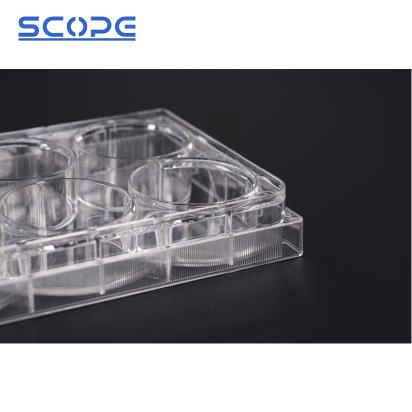
The Importance of Cell Culture Dishes
- Versatility: Cell culture dishes offer exceptional versatility, serving a wide range of applications from simple cell observation to more complex experimental setups such as colony formation assays. Their flat, open-bottom design provides ample surface area for cell attachment and growth, making them ideal for a variety of cell types and experimental protocols.
- Observation and Manipulation: The transparent nature of cell culture dishes allows for easy visualization of cells under a microscope, facilitating observation and manipulation. Researchers can monitor cell morphology, confluence, and other parameters in real time, enabling timely interventions and adjustments to culture conditions. This direct visualization is invaluable for tasks such as cell counting, subculturing, and assessing the effects of experimental treatments.
- Aseptic Environment: Cell culture dishes are equipped with airtight lids that create a sterile environment conducive to cell growth. This aseptic environment minimizes the risk of contamination from external sources, ensuring the integrity of the cell culture. The ability to maintain a sterile culture is crucial for obtaining reliable experimental results and preventing the loss of valuable cell lines.
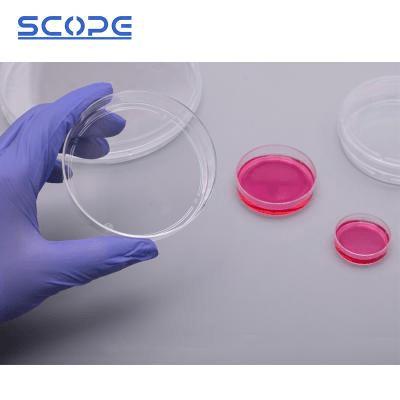
Choosing the Right Cell Culture Vessel: Flasks, Dishes, and Plates
| Factor | Description | Suitable Vessel |
| Cell Type | Adherent cells, such as mammalian cells, require a solid surface to attach and grow. Petri dishes and multi-well plates provide this surface. Suspension cells, like bacteria or yeast, can grow freely in liquid media and are typically cultured in flasks. | Adherent cells: Petri dishes or multi-well plates; Suspension cells: Flasks |
| Culture Volume | The volume of culture medium needed is determined by the number of cells and the duration of the experiment. Larger flasks are suitable for culturing large numbers of cells or for long-term experiments, while smaller vessels are more appropriate for smaller-scale experiments. | Choose a vessel with a suitable volume to accommodate cell growth and prevent media evaporation. |
| Experimental Purpose | The specific experimental goals will influence the choice of vessel. For example, cloning experiments often require isolating individual cells and allowing them to form colonies. Petri dishes provide ample space for colony formation. High-throughput screening experiments involve testing a large number of samples simultaneously, and multi-well plates are ideal for this type of assay. | Cloning: Petri dishes; High-throughput screening: Multi-well plates |
Additional Considerations
- Surface Area: The surface area of the vessel affects the number of cells that can be cultured. Larger surface areas allow for higher cell densities. For example, how to choose cell culture flasks of different sizes is also something you need to consider carefully.
- Material: Cell culture vessels are typically made of polystyrene or glass. Polystyrene is more commonly used due to its transparency and cost-effectiveness.
- Sterility: All cell culture vessels must be sterile to prevent contamination.
- Vent Cap: Many flasks have vented caps to allow for gas exchange while preventing contamination.
Enhancing Research with Versatile Cell Culture Tools
Cell culture flasks, plates, and dishes offer researchers a versatile toolkit for conducting a variety of biological experiments. The choice of vessel depends on factors such as cell type, culture volume, and experimental objectives. As one of the popular lab consumables suppliers in China, Scopelab will introduce and provide you with versatile cell culture tools and other lab consumables. By carefully selecting the appropriate container, researchers can ensure optimal cell growth, facilitate efficient experimentation, and achieve valuable insights into cellular biology.
